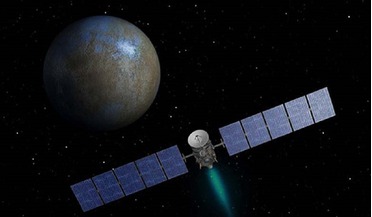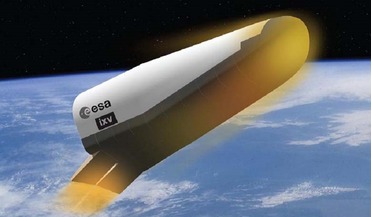 June 2020
Titan’s evolving atmosphere
June 2020
Titan’s evolving atmosphere
...-filled skies that we see today. However, recent data from the Rosetta mission to the comet 67P/Churyumov-Gerasimenko, on its isotopic and noble gas constraints, suggests that a large abundance of nitrogen-bearing complex cometary organic...
 January 2021
Time to change our relationship with space?
January 2021
Time to change our relationship with space?
... impact on our night sky. Artist’s impression of the Rosetta orbiter deploying the Philae lander to comet 67P/Churyumov–Gerasimenko. Rosetta was the first spacecraft to orbit a cometary nucleus and it scored another historic first when its...
 15 November 2014
Pioneering Philae completes main mission before hibernation
15 November 2014
Pioneering Philae completes main mission before hibernation
After being out of communication visibility with the lander since 09:58 GMT / 10:58 CET on Friday, Rosetta regained contact with Philae at 22:19 GMT /23:19 CET last night. The signal was initially intermittent, but quickly stabilised and remained ...
 02 December 2014
Feats of humanity
02 December 2014
Feats of humanity
...will aid in further development of interplanetary missions), and Rosetta – the first time in human history ESA mission to Churyumov-Gerasimenko comet. These events will likely take their place in history as epic feats of humanity. This issue explores...
 13 March 2015
Ceres breakthrough: NASA's Dawn is first probe to visit a dwarf planet
13 March 2015
Ceres breakthrough: NASA's Dawn is first probe to visit a dwarf planet
... water come from? The Rosetta mission didn't find the right water out there on Comet 67 C-G [67P/Churyumov–Gerasimenko]; they found the wrong isotopic ratios. So the water isn't coming from a large distance. It's probably coming...
 13 March 2015
ESA re-entry vehicle could pave way for reusable launcher
13 March 2015
ESA re-entry vehicle could pave way for reusable launcher
... best worldwide, with the ATV (space station supply ship) and the Rosetta mission (to comet 67P/Churyumov-Gerasimenko). “We believe the return capability is running behind,” Tumino said. “We never closed the loop on the capability to go to orbit...